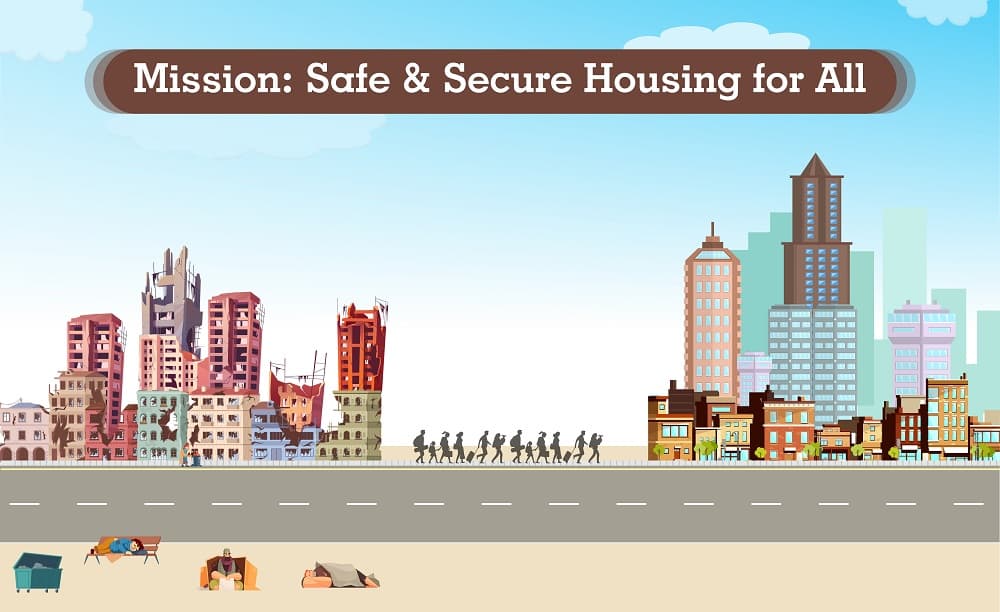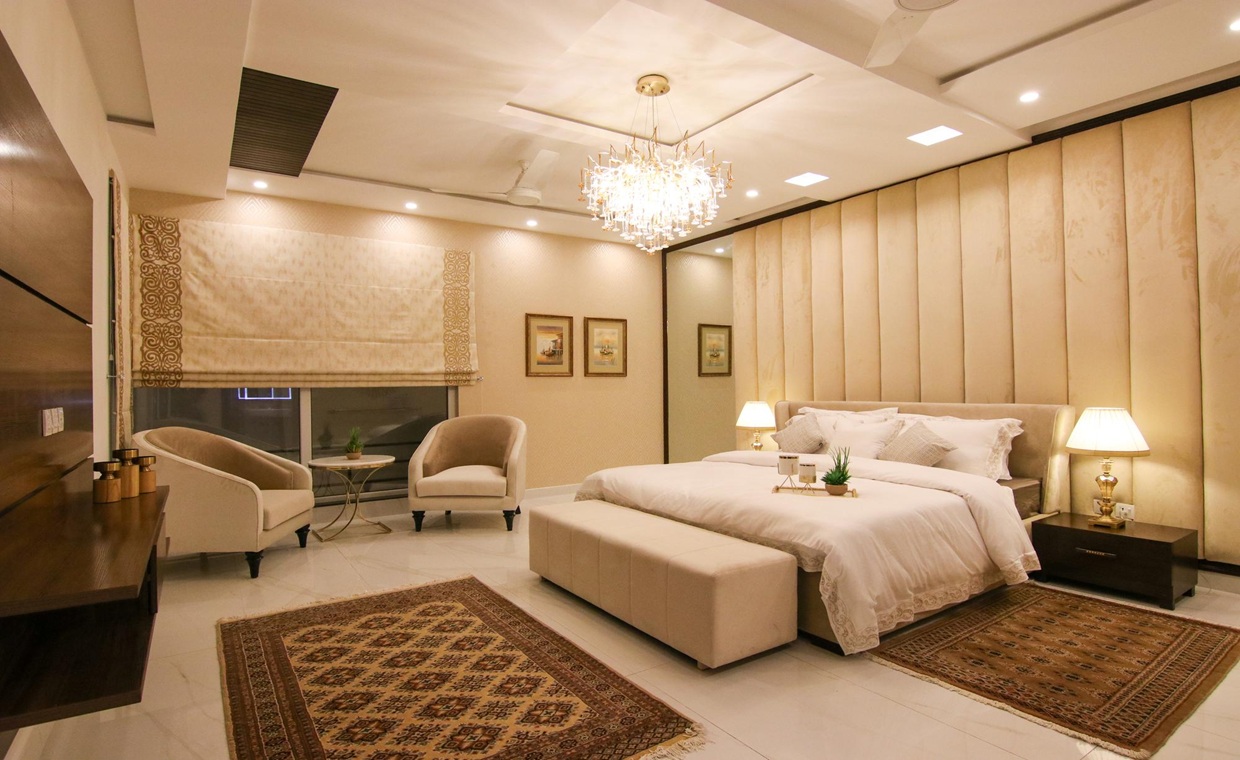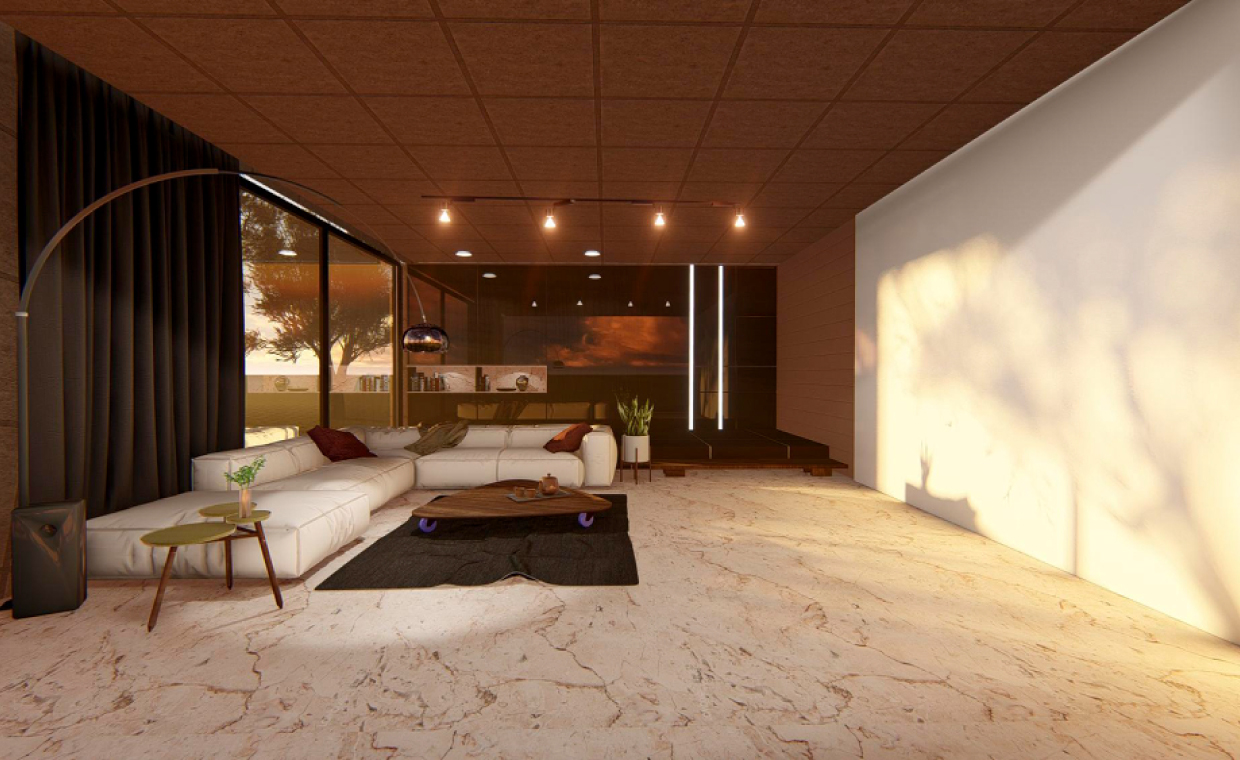
‘Ek Bangla bane nayara’ roughly translating to ‘If only I had a house that is unique…….’ is one of the countless songs across the various languages from the Indian subcontinent. It encapsulates the sentiment of having an ‘Ideal/Unique’ home. Such pop culture episodes also sow the seed of the idea of having a good home throughout the general population. Affordable housing followed by food and clothes has been the basics for human survival ever since humanity existed. The exponential growth of population has led to behind high demand for housing. Do we have enough affordable housing in India? Who needs it? What are the feasible solutions for affordable housing?

Context to Lack of Affordable Housing w.r.t to Housing for All
More than 1/4th of Indian population is affected by the housing shortage. It is generally calculated in terms of housing units. There is a housing shortage in India of 18.74 million and 43.10 million units in urban and rural areas, respectively, as derived from the State of Housing in India data.
Affordable housing in India is a primary concern for people belonging to Below Poverty Line (BPL) to Economical Weaker Section (EWS) to Lower Income Group (LIG). Recession due to the covid and economic crisis, even the Middle Income Group (MIG) has entered this crisis. These economic divisions are listed by the Ministry of Housing & Urban Affairs Government of India to ease the understanding of issues w.r.t the economic context of housing. BPL monetary limit is set by the World Bank, which is somewhat the same worldwide. The groups on a constant hunt for affordable housing are based on total family/household incomes. The following chart will present the idea of the income group division.


The above graphs show the impact on housing under as per income division. In the urban area; with change in time, there seems to be an improvement in the income, but housing still remains challenging to cross the housing hurdle. The BPL is considered under EWS in the urban area. While the Rural areas, BPL and EWS agrarian people bear the maximum brunt.
Right to Housing for All

United Nations Human Rights recognize that housing is not just a commodity but a right of every sapiens that walks on the face of the earth at any time. It reinstalls that ‘quality house’ is a must for people irrespective of gender, caste, creed, race, religion, affordability, disability and nationality.
Indian parallel to this is drawn by Protection of the Human Right to Adequate Housing for all under Indian Law Policy and Case Law under the Constitution of India. The issue of forced eviction is also exaggerated under this. It also sheds light on dignified and quality of life. The last two points signify the importance of affordable housing in India.
Who Needs this Most? Why?

‘Gayatri S. et al.’ have scratched the surface of the underlined caste-based biases in different parts of India. However, different kinds of housing discrimination still exist in rural and urban areas, making housing for all inaccessible.
The list of people who face housing discrimination are:
- Women, scheduled caste/tribes (Adivasi’s) and minorities are victims of housing discrimination from traditional social conditioning.
- Transgender people, Single women and widow’s situations get very vulnerable in society as they are demonized for the choice of living alone.
- Daily wagers, blue-collar and site workers are not considered reliable by a general opinion, adding them to the list of victims of housing discrimination.
- As a result, urban poor and migrants usually settle for substandard housing in slums or houses without proper basic facilities.
- Even students find it challenging to find a hostel at reasonable rates due to economic constraints. Moreover, differently-abled (Divayang) are also deprived of basic needs.
- The slum population census revealed that slums mainly consist of EWS and BPL economic categories who search for affordable housing.
Hence, the policies should include affordable housing in India for all and protecting diverse individuals mentioned above.
Dream Home!

Housing is an aspirational ladder that every person wishes to climb.
A dream home means that houses should be habitable and decent enough for people living there. It should be good quality housing made up of legally acceptable standards of materials and products. Design should be such that it allows light and ventilation. It should be spacious and functional enough to ensure the dwellers’ comfort. Basic facilities like water, electricity and cooking fuel should be available and affordable. These are the essential components which should be part of the affordable housing scheme in India.
Location of the Affordable Housing For All

A McKinsey research adds that house should be well located and well maintained. Near to essential facilities like hospitals, education and recreation. It should be open to all without housing discrimination, irrespective of religion, caste, gender, creed and race. Dwellers should feel secure and stable tenancy.
Housing should have some sort of green cover to help regulate local temperature. In addition, common areas allow people to create a space where interaction can happen with all the dwellers. Such ideas can promote more harmony and boost social equity.
It should be affordable housing in India for all the different income groups brackets. It should not hamper the payment of other essential utilities (cooking fuel, water, electricity, etc.) and essential services (cable, internet, etc.). In addition, loan repayment, medical costs, taxes, travel, and education costs need to be incorporated.
‘Gautam B. et al.’ research has paid significant attention to mobility. Transportation should be easily accessible, affordable, and well connected. In addition, affordable housing in India should complement the transport facilities. It should create an accessible environment for the end-users, especially for the urban poor who need to live far away due to cost constraints.

Affordable Housing Schemes Available for All!
Affordable Housing scheme in India is provided under Pradhan Mantri Awas Yojna – PMAY. Different departments are created for urban and rural areas, namely Pradhan Mantri Awas Yojna – Urban (PMAY-U) and Pradhan Mantri Awas Yojna – Gramin (PMAY-G), to mitigate the affordable housing schemes.
These affordable housing schemes deal with buying, constructing and renovating the first house. The diagram below shows the branching of housing schemes. These affordable housing schemes are appropriated at state levels also.

Pradhan Mantri Awas Yojna Urban (PMAY U)
The affordable housing schemes which promote affordable housing in India in urban areas are covered under Pradhan Mantri Awas Yojna Urban (PMAY U). Different PMAY schemes, which include a variety of solutions from redevelopment to subsidies, are described below.
01. “In-situ” Slum Redevelopment (ISSR)
Conversion of in-situ Slum redevelopment (ISSR) into proper ‘pucca’ houses in the very place the slums used to exist. Financial assistance is provided by State, Central government and Urban Local Bodies. Even private companies participate in the construction process.
02. Credit Linked Subsidy Scheme (CLSS)
Credit Linked Subsidy Scheme (CLSS) is an interest-based subsidy linked with credit provided by the central government for EWS, LIG and MIG.
How much time does it take to get a PMAY CLSS subsidy would help you to plan the timeline for the subsidy accordingly.
03. Affordable Housing in Partnership (AHP)
The central government provides financial assistance for people from the EWS affordable housing in the partnership (AHP) category.
Physically handicapped persons, senior citizens, SC/ ST/ OBCs, minorities, single women, transgender and other weaker sections of the society are given preference in affordable housing in India scheme.
04. Beneficiary-led construction/enhancements (BLC)
The central government provides financial assistance for Beneficiary-Led Construction (BLC) for an individual house renovation, extension and enhancement. Still, the construction has to be done by the beneficiary only.
Affordable Rental Housing Complexes (ARHCs)
The Affordable Rental Housing Complex scheme (ARHCs) is provided in two ways.
- Available as rental apartments. Rent is fixed by the local authority. It is open to all kinds of beneficiaries, including Urban Migrants and the poor.
- Vacant houses are converted into homes funded by the government. It can also be run by a public-private partnership or Public Agency.
Public and private entities Construct, Operate and Maintain an Affordable Housing Complex on their own available vacant land.
Please ensure that all the terms and conditions of an agreement are clear, terms and condition of a lease agreement would be an apt article for you to understand this.
Pradhan Mantri Awas Yojna – Gramin (PMAY-G)
In the rural area, several schemes are mentioned under Pradhan Mantri Awas Yojna Gramin (PMAY G) for affordable housing in India. A brief introduction to affordable housing schemes under PMAY G is given below.
01. Pradhan Mantri Awas Yojna – Gramin (PMAY G)
Rural/Gramin areas provide ‘pucca’ houses with basic amenities for the homeless and homes in dilapidated condition.
EWS and BPL are provided with financial assistance and employment benefits.
02. Rural Housing Interest Subsidy Scheme (RHISS)
The Rural Housing Interest Subsidy Scheme (RHISS) helps the rural beneficiaries get financial subsidies at interest. Interests are given at a subsidized rate.
03. Rural Mason Training (RMT)
A Rural Mason Training manual (RMT) is provided to skill up the local masons. It is a pan-India certification program. The main aim of this is to create quality housing.

Key Fitting the Lock of ‘Affordable Housing in India’
Almost one in four-person have housing issues. This signifies that affordable housing in India for all is still a monumental task. This can only be addressed by accepting the gravity of the problems in the first place. Such a massive scale issue can only be solved if public, private, and government institutes unite with ordinary people. Creating awareness about rights and schemes will help reach out to more people. Many beneficiaries are unaware of what the government treasures offer them. Mediators could help spread the word so that maximum could take benefit of such schemes and support the dream of ‘affordable Housing’ becoming a reality for all the people. We can find one such fine example of collaboration at Kamdhenu Park. Kamdhenu Park levels up the game of affordability by adding luxury too.
All the houses have to register under the law of the land. Therefore, the procedure of property registration can help you sail through.






























